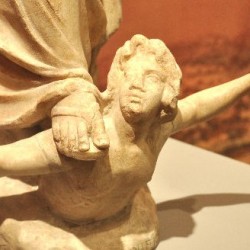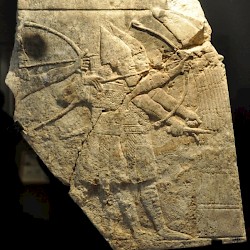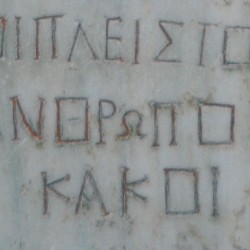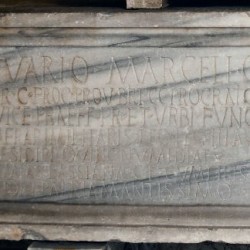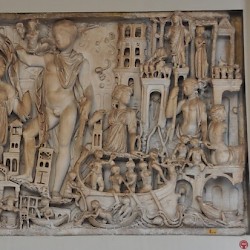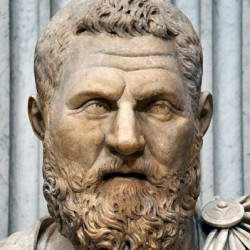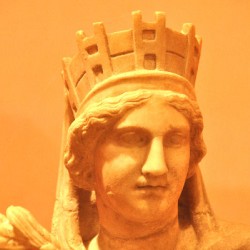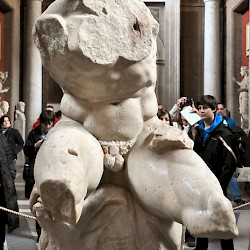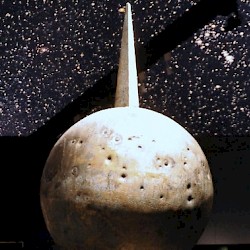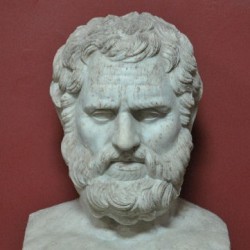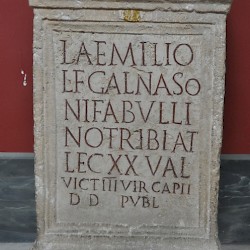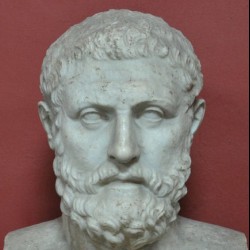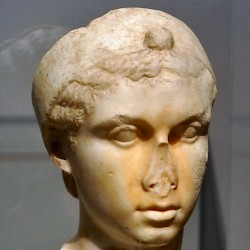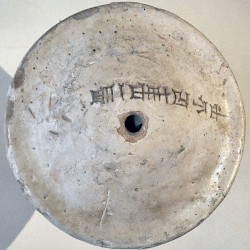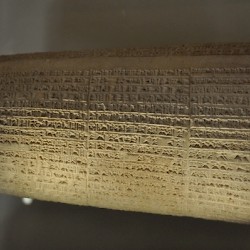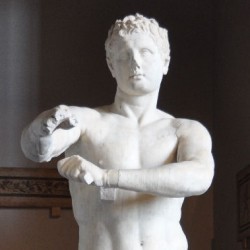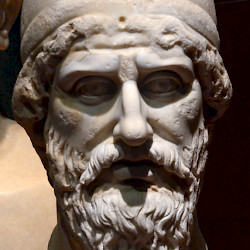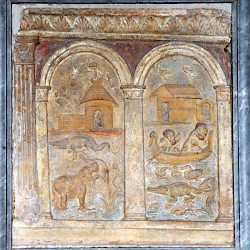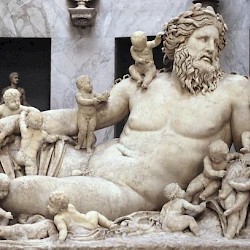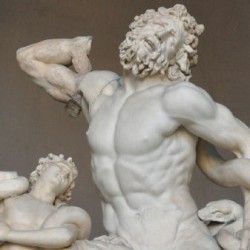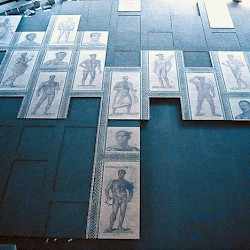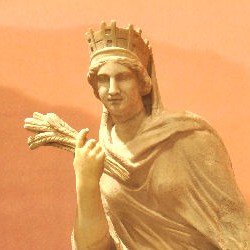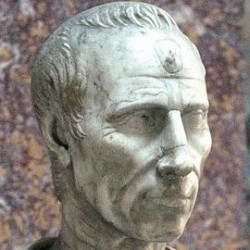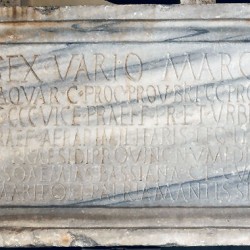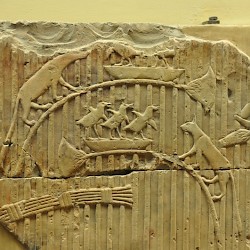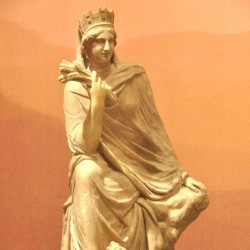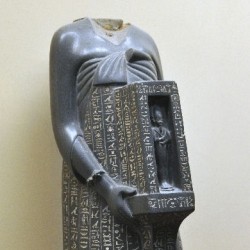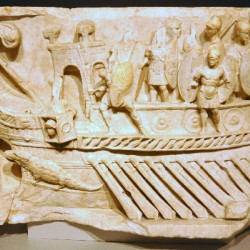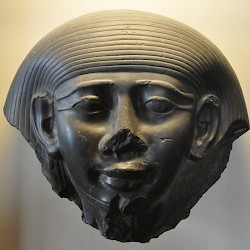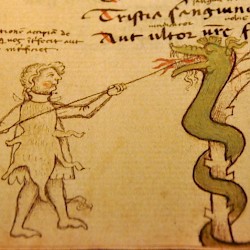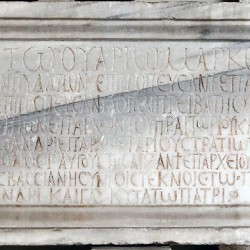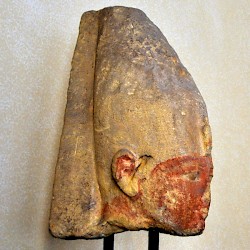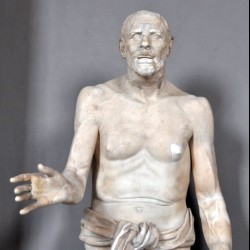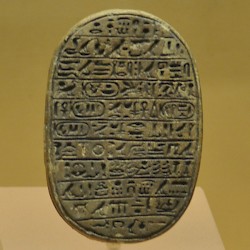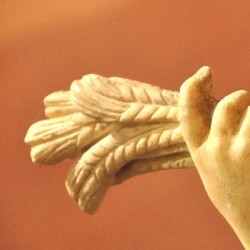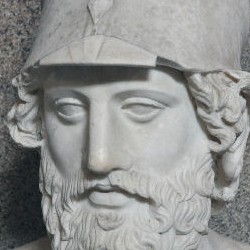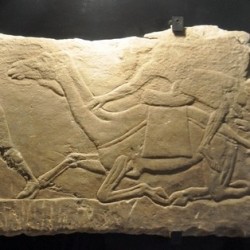Rome, Vatican Museums
Q182955If you think that the message of the Catholic Church has something to do with love for humankind, you haven’t visited the Vatican Museums yet. It is impossible to leave the building without feeling a profound hatred against other people – all of them, and that means quite a lot in the Vatican Museums.
Simply stated, the collections are not a museum in the normal sense of the word, but a decorated route to the Sistine Chapel and back, and everything is organized to make sure that as many people as possible – and if possible a bit more – will stand under Michelangelo’s ceiling. The Vatican Museums have little to do with showing people things, enabling them to study, or teaching them something.
Several important departments are closed. During our visit, it was the New Wing (with the famous Augustus of Primaporta), the Museo Gregorio Profano, and the Museo Pio Christiano. The friendly lady at the information desk was unable to tell when they would be reopened, and I think that the Vatican authorities are not in a hurry, because the last time I was able to visit them was in 1984. (Marlous claims to have been in the Museo Pio Christiano in 2004 or so.) Yet, the directors are aware that people are interested in these collections; after all, the museum sells replicas of objects from those departments. Take my advise: allow the visitors to see the works of art themselves.
When we had discovered that these departments were again closed, we hesitated. For a moment we wanted to leave, but in the end we decided to stay and make the most of it, more or less against our better judgment.
At first, our decision seemed justified: when we reached the Quattro Cancelli, where you enter the museum itself, we found the terrace open, so that we could get some fresh air, which we badly needed, even though we had just arrived. From here, you can go to the Picture Gallery, which is usually delightfully quiet. However, this time we wanted to take photos of the ancient objects, so we decided to visit the Egyptian museum.
Stupid. Many people had made the same choice and were strolling around, not knowing what they were gazing at, not understanding what they were actually doing there. Yet, Marco managed to take some photos: the naophoros of Wedjahor-Resne for example, the statues from the Canopus in Hadrian’s villa in Tivoli, and two Ptolemaic statues of Ptolemy II Philadelphus and his sister-wife Arsinoe II. They were found in the Gardens of Caesar in Rome, and there’s a third statue of Drusilla.
It was only when we were back at our hotel that I realized that there must have been a fourth statue, representing Drusilla’s brother-lover Caligula. They must have wanted to show that their incestuous affair had venerable precedents. Usually, I understand what I am seeing in a museum, but in this time, I could only look without seeing.
Passing along the Nineveh reliefs – there’s an interesting scene of an Assyrian attack on Arab tents – we reached the tombstones of the Scipiones, where we took photos. Usually, no one looks at those old epitaphs, but once we were taking our photos, other people started to pause and took pictures too. (As I said, they don’t know what they are looking at and do not understand what they are doing in a museum – my hatred of human beings was already growing.) We passed along the Apoxyomenos, one of my favorite statues, and proceeded to the Octagonal Court, where we caught some fresh air again and could take photos of the Laocoon Group. Marlous discovered the tombstone of Varius Marcellus, the father of Heliogabalus.
As always, the rooms with the animals were closed – I have only visited them in 1984 – and the famous Belvedere Torso was just an obstacle to most people, who were too tired to admire it. It is one of those statues that have become more impressive because they’re incomplete; had all limbs been there, it would be just a statue, now it suggests something more beautiful than it can in reality ever have been. Looking around, we took photos of some of the busts standing over there, smiling at the maxim on the pedestal of the bust of Bias of Priene.
It was impossible to take photos in the Sala Rotonda, but we did discover that the bust called “Pertinax” in fact represents Plautianus, whose photo was still absent from our collection. (Generally speaking, explanatory signs in the Vatican Museums are outdated, but this was done well.) The multitude pushed us to the Hall of the Greek Cross, where we did our best to take photos of the sarcophagus of Helen, and we were almost pushed into the corridor leading to the Sistine Chapel; however, we climbed across a fence, broke away from the masses, and walked to the restaurant.
We were lucky. At 12:30, it was not terribly crowded, and for a fast-food restaurant, the Vatican osteria is efficient and offers good food. We needed it, because we were already getting tired. It is hard to enjoy art when you have to concentrate on not walking into the people around you.
In the afternoon, we managed to take photos in the Gallery of Maps (nice little pictures of ancient battles), survived the Stanze di Raffaelo and even enjoyed them, and reached the Sistine Chapel. As always, I was too tired to be able to appreciate Michelangelo’s double masterpiece, but once I had found a chair, I could at least watch one of the paintings by Pietro Perugino. I slowly realized that “The Delivery of the Keys” is in fact also a representation of the Temple Cleansing.
On our return – people with baby buggies obstructing one of the corridors – we passed through the Gallery of Urban VIII, where usually exhausted people are trying to make their way to the exit. We felt exhausted too, but managed to take photos of the statues of Lysias and Aelius Aristides, and admired the objects from the Catacombs. There was some fine glasswork. Of course, our making photos made other people curious, so that the rooms became quite crowdy.
Rather unsatisfied, and full of odium generis humani, we left the museum. It was about half past three, and we decided to walk back to our hotel and have some fresh air. I was so exhausted that I was already walking in the wrong direction; if Marco hadn’t intervened, we would have made a long detour. When we reached the Tiber, we vowed that this was the last time that we would vow that this was our last visit to the Vatican Museums.
Well, sort of. The Vatican Museums can easily become nice again, so that people might actually appreciate their visit. The trick is to separate the people who want to see the Sistine Chapel from the visitors of the museums. As the chapel already has an exit to Saint Peter’s Square, making an additional entrance cannot be too difficult.
Another simple measure is to double the price of a ticket, and invest the proceeds in quality. The Capitoline Museums and the Museo Nazionale delle Terme di Diocletiano show how things can be done. People are willing to pay any price, and 28 euro is not excessive for one of the world’s most important art collections. Something needs to be done, because right now, the objects are suffering from the simple fact that you cannot look at them your leisure.
Because that’s the real problem: a truly superb collection has become inaccessible. You simply cannot study the objects. I am not against museums trying to welcome as many visitors as possible – there are perfectly sound financial reasons for that – but the object of a visit is to learn something. If this has become impossible, something is wrong.
This museum was visited in a/o 1982, 1999, 2000, 2009.
